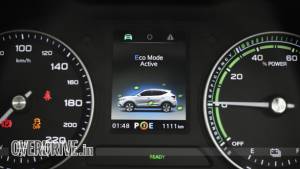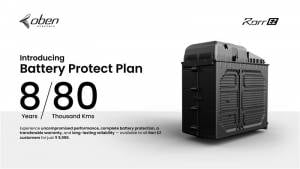How to Test and Review Electric Vehicles
Few weeks back I wrote about "How Should Cars Be Road Tested and Reviewed?" Thankfully many of you appreciated it and some even asked my views on road testing of EVs, or electric vehicles. This is really very interesting because EVs have not only reinvented the componentry of vehicles and the way they are powered and fueled, but they have also redefined the road testing process.
 Electric vehicles have almost completely changed the componentry of cars and the way they are powered and fueled.
Electric vehicles have almost completely changed the componentry of cars and the way they are powered and fueled.
Electric vehicles don't have an engine or transmission. No radiator or fuel tank either. So there is no need for an engine compartment and an engine cover or bonnet. A grille or fuel lid cover is also not necessary. Which means the exterior design and shape and profile can be quite different from conventional cars. Aerodynamics play an even more important role in EVs because the more slippery the shape, the better the efficiency and vehicle range. So in my view when you evaluate the looks and styling in an EV, the aero package and how aesthetically the designers have utilized the absence of an engine, grille, air intakes and so on, should be factors for rating the design.
 Things like driving range and charging time are of utmost importance.
Things like driving range and charging time are of utmost importance.
As for performance, the driving range is most critical because to most people it defines how good the EV is. The other vital thing is the charging speed or time. How long it takes for it to get a full charge and also what is the percentage of charge in an hour or so, in case you want to do a splash and dash. Does the EV support fast charging? All this is important.
 There is no engine. Only batteries that store electrical energy and motors that drive the wheels.
There is no engine. Only batteries that store electrical energy and motors that drive the wheels.
Regenerative braking systems also aid in extending the range as they recapture and convert kinetic energy back to electrical energy, whenever the vehicle decelerates or slows down. Most EVs allow the driver to select various levels of brake regeneration and by opting for the highest level the range can be extended by 20 to 30 percent via the recaptured energy. So let's say you drive 100 kms, the energy for about 20 or maybe 30 kms could be contributed by the regenerative braking system! This is self-generated energy, and you don't pay a single rupee for it! This makes the levels offered by the regenerative system and its functioning critical in an EV.
 EVs have given birth to lots of new automotive terms.
EVs have given birth to lots of new automotive terms.
Like many conventional cars, EVs too come with driving modes like sport, comfort, economy, etc. Therefore one should examine how cohesively the various regenerative braking levels and driving modes function. Ideally you would drive in sports mode and select maximum regenerative braking as this should provide best performance and maximize range. But if the driving experience is jerky, then it may not be the best combination. So while reviewing an EV, all these elements have to be studied and analyzed properly too. But accurate road testing of all this is difficult as everything can vary according to the driving conditions and prevalent situations.
 Screens and their graphics have become vital because in an EV you need to look at the displays far more often.
Screens and their graphics have become vital because in an EV you need to look at the displays far more often.
In an EV, what is extremely important are the information displays and screens because the driver has to look far more often at them, as he has to keep track of the electrical energy situation, battery charge, regenerative braking levels, driving modes, etc. So what is displayed and how is quite critical. Are the screens easy to read while driving and are the displays and graphics easy on the eyes and not distracting, especially at night. Dashboard and display design play a vital role in an EV, thus the reviewer also needs to study everything suitably.
 One of the most critical instruments or displays is the range-o-meter.
One of the most critical instruments or displays is the range-o-meter.
Then of course are the established fundamentals like acceleration, power delivery, drivability and so on. I have not mentioned them so far because they are a given in most electrical vehicles. Simply because an electric motor does not need to burn fuel like an internal combustion engine and generate power via the combustion process. Instead it draws its power from batteries that store energy, and thus electric motors can provide their max torque and power from zero RPM (revolutions per minute). This means that when you press the accelerator pedal in an electric vehicle there is an immediate surge of power due to the instantaneous torque delivery. And some EVs are quicker off the block than even some sports cars!
 Regenerative braking also helps enhance the driving range.
Regenerative braking also helps enhance the driving range.
Another advantage of this instant torque is better drivability. Electric motors don't have a limited rev range like IC engines and some of them can even rev up to 20,000 rpm! And as they are able to consistently produce and provide torque across their wide rev range, it means when you want to get a move on, you just need to push the pedal to obtain instant response and acceleration. Yes, unlike an IC car there is no down shifting or waiting for the engine to build revs and the vehicle to gather speed before overtaking. In an EV you ask, and you get.
 Battery charge level is imperative too.
Battery charge level is imperative too.
 One should check if the various driving modes and brake energy recuperation levels work seamlessly.
One should check if the various driving modes and brake energy recuperation levels work seamlessly.
Hence these aspects are not as imperative as in a conventional car. Other things are more crucial like the size and placement of batteries and how much space they leave for both occupants and luggage. If the batteries are located on the floor, then what is the ground clearance? Also things like the sound, or the lack of it, and how it impacts the driving experience. For all these reasons and several others that I have not mentioned here due to article length constraints, road testing and reviewing of EVs definitely needs a different approach.
 Selecting the right driving mode and brake regenerative levels, can help get best performance and maximum driving range too.
Selecting the right driving mode and brake regenerative levels, can help get best performance and maximum driving range too.














